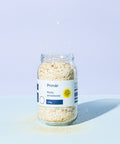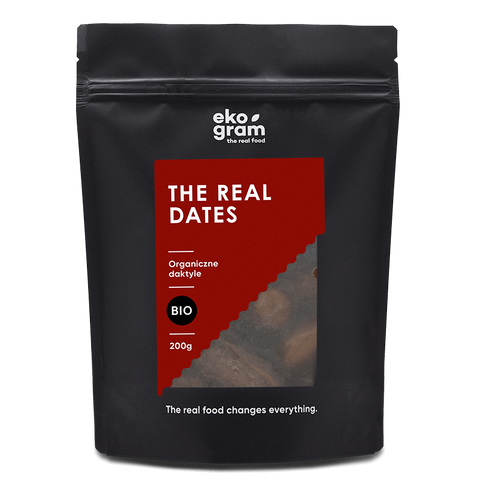It is customary to say that the best eggs are those “from happy hens”… But what does that actually mean? What's the difference between organic and free-range eggs? How to recognize a good quality product and what to look for when buying? Check out our post where you will learn everything about eggs.

Do the best eggs come from your own henhouse? Probably yes, if only we take care of the conditions in which hens live and what we feed them. However, raising chickens is no small undertaking. You need to prepare for it properly and learn how to care for domestic birds so that they lay healthy and tasty eggs. Not everyone wants and can afford the "luxury" of keeping chickens in a hen house. Most of us buy this product in the store. It is therefore worth learning a few simple rules that should be followed when buying eggs so as to become a conscious consumer, caring not only for the health of your family and your loved ones, but also for the welfare of animals and the entire planet.

Picking out eggs in the supermarket can make your head spin! On the shelves there are eggs from cage, barn, free-range, so-called. rural eggs from organic farms and eggs from green-legged squirrels . The size and shade of the shell of each egg may vary, and each egg has mysterious markings. How to find yourself in all this and how to choose the best, healthiest eggs?
All about egg marking
Let's start with the most important issue, which is the easiest way to verify the quality and origin of eggs. According to European Union standards , Polish producers are obliged to mark eggs and provide very detailed information about their origin.
Marking eggs on the shell
On the shell of each egg released for sale there should be a visible and legible stamp with the manufacturer's code consisting of 11 characters. The pattern of this marking can be represented as: 1PL010010XX.

This code contains the following information:
- at the beginning of each code there is a number indicating the system of rearing laying hens: 0 - organic farming, 1 - free-range farming, 2 - barn farming or 3 - cage farming
- then we have the code of the country where the farm is located (PL for Poland),
- at the end there is an 8-digit veterinary identification number indicating, among other things, the detailed location of the kennel.
Markings on egg packs
Packaging in which eggs are sold, the so-called cartons must bear the name of the article and the manufacturer's details and the exact address of the farm where the eggs come from. The date of minimum durability of no more than 28 days from the date of laying is also mandatory information that should be on the packaging.
In addition, quality and weight class designations are used. Class A, also referred to interchangeably as "fresh eggs", are eggs available for retail sale intended for household consumption. Grade B eggs are second-class or ungraded eggs that are suitable for food or non-food industry purposes only.
The egg size class is determined by the same letters that we know from the size designations on clothing labels:
- XL - very large eggs weighing more than 73g,
- L - are large eggs weighing 63 g - 73 g
- M - are medium eggs weighing 53 g - 63 g
- S - are the smallest eggs weighing less than 53 g
Eggs in different weight classes have a different price, but they do not differ in quality, only in the weight of protein . So if you are looking for eggs for meringues, choose these XL grades. In other cases, it does not matter much, because the size of the egg has no effect on its quality and taste, and most often simply depends on the breed of laying hens.
Egg marking - exceptions to the rule
Each of us has probably bought unmarked eggs more than once, for example at the local market or from a farmer we know. Is such sale legal and are eggs without codes safe?
Know that some breeders are exempt from marking eggs. This applies to producers who have no more than 50 laying hens and who sell their product directly to the final consumer in the same county or adjacent counties where the farm is run. However, such a breeder is obliged to provide the name of the farm or his name and the exact address of the farm at the client's request. It should also have an individual veterinary identification number and, preferably, a certificate of registration for direct sale or retail trade.
Breeders who sell up to 2,450 eggs per week to the final consumer at the place of production may, in turn, not use weight and quality classification markings, but they are obliged to mark eggs with a code on their shells.
Eggs "0", "1", "2" and "3" - what should you know?
Now let's move on to the analysis of the meaning of the first and really the most important number for the quality of eggs, visible on the stamps of the shells.
"3" - eggs from caged hens , where hens spend their entire lives in a tight, closed cage, without bedding, without freedom of movement and the ability to stretch their wings. Such hens have no contact with the natural ground or access to sunlight and fresh air. In a cluster, they often hurt each other, get sick, and their average lifespan is 1.5 years. Cage hens are given genetically modified feeds to improve their carrying capacity. This method of breeding has been controversial among consumers around the world for many years and is considered the least humane. The largest retail chains and food producers announce the resignation from the sale and use of "three-eyes" in the production of eggs, and some of them have already implemented their declarations. In Poland, eggs marked with the number "3" cannot be found in Biedronka, Makro and Netto.
"2" - eggs from barn farms . This means that the hens are kept in cages with bedding in which they can roam freely, which is very important for their health. They also have perches and more freedom of movement than caged hens. However, they cannot go outside and do not have contact with sunlight. Barn hens are usually fed low-quality feed, which also affects egg quality.
"1" - is the so-called free-range eggs from hens that are housed in barns with bedding and have freedom of movement and access to an outdoor run. However, their food is not strictly controlled.
"0" - organic eggs from hens bred on an organic farm, where hens have complete freedom of movement, access to fresh air and soil, and are fed with unmodified feed with an organic certificate. Zero eggs are the most expensive, but considered the safest and healthiest. These hens are not given antibiotics or artificial stimulants to improve their carrying capacity. The life cycle of organic hens is completely natural and closely related to the laws of nature.
Are organic eggs healthier than other types of eggs?
The taste, quality and nutritional value of eggs depend on many factors. The main ones are the method of feeding the hens and the quality of the feed, which has been confirmed by scientists from the Warsaw University of Life Sciences, but environmental considerations related to the living conditions of the birds are also extremely important.
Eggs from cage hens are the least valuable. Such farms are focused on low costs and, at the same time, the highest possible efficiency. As a rule, hens are fed with low-quality feed containing genetically modified additives and hormones that increase the hens' carrying capacity. Due to the living conditions, hens from cages are very often sick, which in turn boils down to giving them a large amount of antibiotics. Stressful living in cramped conditions, lack of access to fresh air and sunlight can also affect the quality of the egg.
The quality of organic eggs is definitely the best and is characterized by a higher content of valuable nutrients, including Omega-3 and lutein. The hens are fed with natural, ecological feed without hormones and modified additives. In addition, birds have constant access to grass, herbs, weeds and insects. Hens in organic farming are simply happier and lead a carefree life, thanks to which they lay healthy and tasty eggs.

What's the difference between organic and free-range eggs?
Free-range chickens, like chickens on organic farms, should have access to fresh air, sun and natural food from the soil. so-called however, free range is not defined by any specific rules regarding the amount of time outdoors required for the hens, the amount of space each hen should have access to, or the quality of the feed provided. In some cases, free-range farming can therefore mean a commercial industry in which the producer does not care about the quality of life of the reared animals, and thus also the quality of the eggs they lay.
Organic eggs marked with the number "0" are under constant and strict control of the certification body, which regularly checks the farm in terms of the conditions of rearing the hens, the feed provided and any other factors that may affect the biological purity and quality of the eggs.
Free-range eggs - risks
You should know that organic eggs, especially unmarked ones, bought from private breeders are more likely to be contaminated with heavy metals than e.g. barn eggs. A hen that freely pecks grass and feeds on what it finds in the paddock, bred near busy roads, sewage or in industrial areas, will lay an egg that may contain heavy metals. When buying organic eggs, it is worth being sure that they come from clean regions of Poland and that the breeder keeps his henhouse clean and the hens are raised in appropriate conditions.
Egg shell color - does it matter?
The color of the eggshell does not depend on the hen's diet, but only on the color of its plumage. The darker the hen's feathers, the darker the egg's shell. White eggs are basically only laid by white layers. The color of the shell has no bearing on the quality and nutritional value of the egg.

Green leg eggs without cholesterol?
The green-legged partridge is a breed of hen characterized by high resistance to diseases and good resistance to low temperatures. Small, light beige and slightly elongated eggs from green legs are considered the most valuable in terms of the composition of amino acids and the content of vitamins, minerals and active substances. It is often heard that green legged eggs do not contain cholesterol. It is a myth! Cholesterol-free eggs are physiologically unachievable and could not function without this important ingredient. It is true, however, that green-legged eggs contain less cholesterol compared to eggs from other hens. The yolk of green-legged eggs contains about 150 mg of cholesterol, while in others we find about 200-250 mg of this ingredient.
































Comments (1)
Hej, Michał rozumiem, że musisz wprowadzić do sprzedaży jaja ekologiczne,
Pozdrawiam